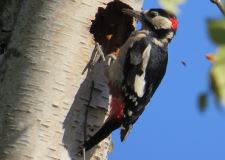Lesser Spotted Woodpecker project - plans for 2020

Now is the time to get out into the woods and find Lesser Spotted Woodpeckers.
They are at their most conspicuous now (March and April) and are easily audible and visible (as there are no leaves on the trees). We (LesserSpotNet) have already had lots of reports of birds displaying, calling and drumming. So now is a great time for you to check suitable woodland for the presence of Lesser Spots and keep a record. During the winter their home range can be huge, hundreds of hectares, but in a few weeks, they will settle down in favoured nesting area. Still a big area but is much smaller than their winter range.
Please help with the Lesser Spot Network project this year.
'Woodpeckers' a great little book by Gerard Gorman
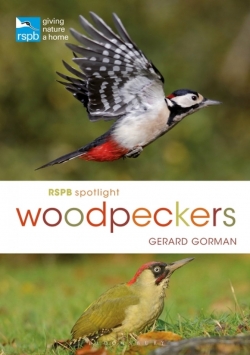
A great way to find out more about our British woodpeckers get a copy of 'Woodpeckers' by Gerard Gorman in the RSPB Spotlight series
Report on Breeding Lesser Spotted Woodpeckers in 2019 now available

The 2019 Report on breeding Lesser Spotted Woodpeckers is published.
Thanks everyone for your contributions to understanding breeding Lesser Spotted Woodpeckers and for finding so many nests in 2019!
This year we have excellent and important data from 23 nests in 9 different counties – our best year since we started the Lesser Spotted Woodpecker project in 2015.
How the abundance and timing of caterpillars affects nesting success of Great Spotted Woodpeckers
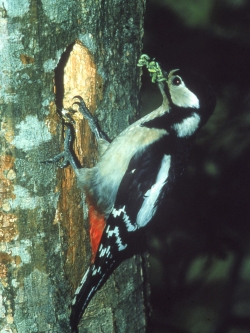
New research published. There has been a lot of attention recently on the impact of climate change on the timing of nesting and the availability of prey. We have been studying Great Spotted Woodpeckers since the 1980s and have used our data on the nests and defoliating caterpillars collected over the last 20 years to examine this. Our paper has just been published in the journal Bird Study.
Great Spotted Woodpecker nest hole orientation

It is great to see the coverage of nesting Great Spotted Woodpeckers in BBC Springwatch – they are brilliant birds.
We were interested to see that the woodpecker holes in the Scots Pines in Abernethy Forest tend to be orientated to the northeast. Our long-term studies of Great Spotted Woodpeckers in oak woodlands in Hertfordshire, southern England (see for instance Smith 2007) show a similar pattern even though the nest tree species and location are different from Abernethy.
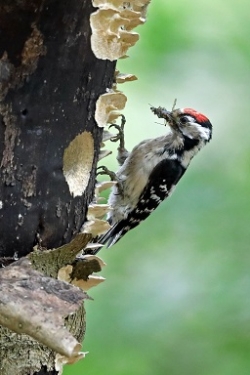 Lesser Spotted Woodpecker by Richard Jacobs 2019
Lesser Spotted Woodpecker by Richard Jacobs 2019 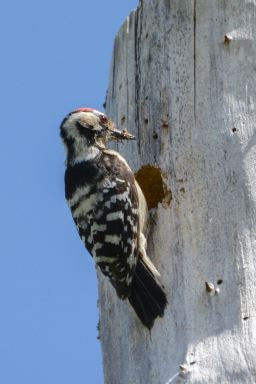 Lesser Spotted Woodpecker © Tim Preston
Lesser Spotted Woodpecker © Tim Preston
Don't confuse juvenile Great Spotted Woodpeckers with male Lesser Spots - they both have red caps!
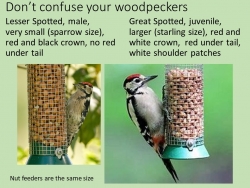
Newsletters
To download our newletters and reports, please use the links below:
Lesser Spotted Woodpeckers in 2019
